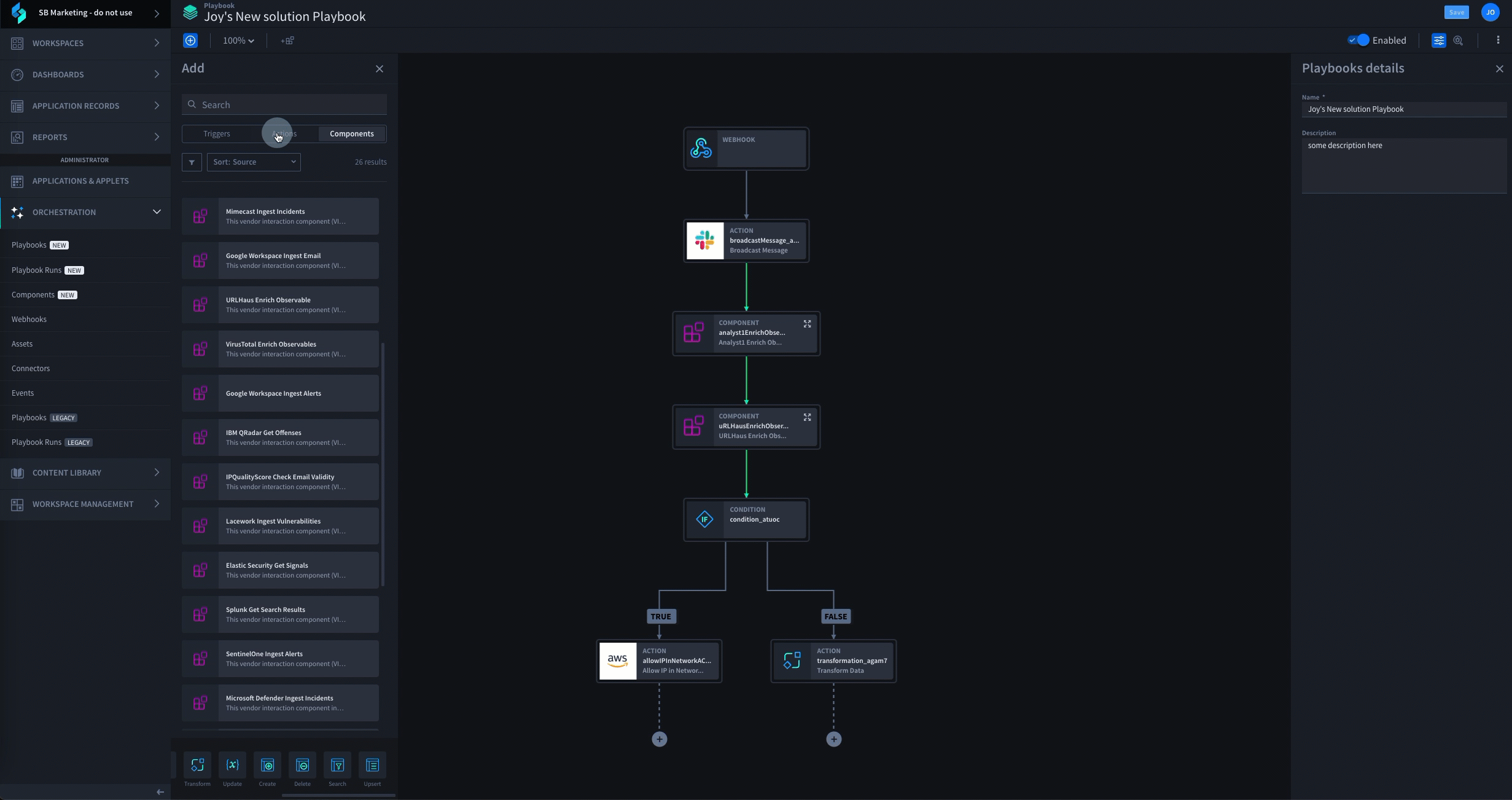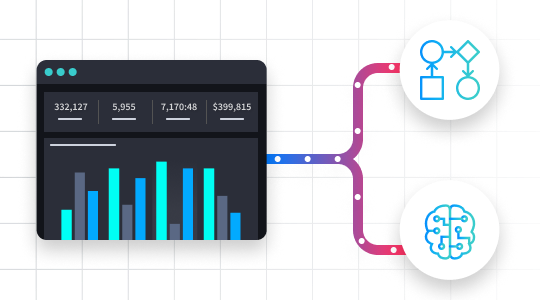Terms and acronyms can get convoluted in the ever-growing security marketplace. A perfect example is SIEM and SOAR, two terms many people use interchangeably. Although security information and event management (SIEM) and security orchestration, automation and response (SOAR) have capabilities that compliment each other, they are not the same thing. With this in mind, the most successful security operations (SecOps) teams use both technologies to optimize their security operations center (SOC).
At their core, SIEM focuses on collecting, analyzing, and correlating security event data to detect threats in real-time, while SOAR automates and orchestrates incident response workflows, enabling faster and more efficient threat mitigation. Together, they provide a more comprehensive approach to cybersecurity.
What is SIEM?
Firewalls, network appliances and intrusion detection systems generate an immense amount of event-related data – more data than security teams can reasonably expect to interpret. A SIEM makes sense of all of this data by collecting, aggregating, and then identifying, categorizing and analyzing incidents and events. This is often done using machine learning, specialized analytics software, and dedicated sensors.
A SIEM SOC solution examines log data for patterns that could indicate a cyberattack, then correlates event information between devices to identify potentially anomalous activity, and finally, issues an alert accordingly.
So why isn’t a SIEM solution effective on its own?
Before log data is processed by a SIEM, it goes through a series of hand-offs between data aggregation tools. From there, the SIEM then runs analytics and creates an event that needs to be responded to. This data aggregation lifecycle makes threat detection and incident response slower and more expensive than it should be because SIEM isn’t built to respond to incidents – that piece of the security puzzle is still missing.
SIEM tools also typically need regular tuning to continually understand and differentiate between anomalous and normal activity. The need for regular tuning leads to security analysts and engineers wasting precious time on making the tool work for them instead of triaging the constant influx of data.
What is SOAR?
Like SIEM, SOAR tools are designed to help security teams reduce alert fatigue and streamline incident response processes. SOAR platforms take things a step further by combining comprehensive data gathering, case management, standardization, workflow and reporting to provide organizations the ability to implement sophisticated defense-in-depth capabilities.
Here’s how:
- SOAR solutions gather alert data from each integrated platform and place them in a single location for additional investigation.
- SOAR’s approach to case management allows users to research, assess, and perform additional relevant investigations from within a single case.
- SOAR establishes integration as a means to accommodate highly automated, complex incident response workflows, delivering faster results and facilitating an adaptive defense.
- SOAR solutions include multiple playbooks in response to specific threats: Each step in a playbook can be fully automated or set up for one-click execution directly from within the platform, including interaction with third-party products for comprehensive integration.
Put simply, SOAR integrates all of the tools, systems and applications within an organization’s security toolset and then enables the SecOps team to automate incident response workflows.
SOAR’s main benefit to a SOC is that it automates and orchestrates time-consuming, manual tasks, which enables security teams to speed up response times and better use their specialized skills. The result is faster MTTD and MTTR, reduced dwell time, and a higher level of preparedness.
What is the Difference Between SOAR and SIEM?
| SIEM | SOAR | |
| Primary Purpose | Analyze and aggregate event-related data to identify and categorize potential security incidents. | Automate and orchestrate the security incident response and SOC case management. |
| Core Functionality | Collects, aggregates, and analyzes log data. Uses machine learning, analytics, and sensors to detect potential threats. Generates alerts for SOAR to remediate. | Gathers alert data from various platforms like SIEM, EDR, XDR, and TIP. Manages cases in from a central console. Initiates automated and adaptive incident response workflows. |
| Integration | Focuses on collecting data from various network devices and systems. | Integrates all security tools, systems, and applications in an organization to automate incident response workflows. |
| Incident Response | Limited to alerting on potential incidents based on detected patterns. Does not provide a built-in response mechanism. | Provides a comprehensive response mechanism using playbooks that can be fully automated or manually executed. Generates dashboards and reports on security incidents. |
| Challenges/Limitations | Slower threat detection due to the lengthy data aggregation lifecycle. Needs regular tuning. Does not inherently respond to incidents. Long term log storage is exepensive. | Documented processes, SOC roles and responsibilities is required for successful SOAR implementation. Doing so can be a challenge and barrier for less established SOC teams. |
| Primary Users | Security analysts and engineers looking to detect potential cyber threats. | Security teams looking to automate and orchestrate their response to detected threats. |
| Effect on SecOps | Increases the amount of detectable incidents but might produce more alerts than can be practically responded to. | Enables the security team to efficiently handle a high alert load and focuses them on specialized tasks, resulting in a higher-performing SOC. |
What are the Benefits of SIEM?
Stronger Security Monitoring via Comprehensive Data Analysis
SIEM centralizes and analyzes security data from multiple sources, providing real-time insights and detecting anomalies that might indicate threats. This proactive monitoring helps security teams identify risks before they escalate.
Faster Threat Detection with Real-Time Alerts
By continuously scanning and correlating security events, SIEM automates threat detection and triggers real-time alerts, enabling rapid response. Behavioral analytics help detect both known and unknown threats.
Simplified Compliance Management with Advanced Reporting
SIEM automates compliance reporting, ensuring adherence to regulations like HIPAA, GDPR, and SOC 2. Custom reports and audit logs make audits easier and more efficient for security teams.
Greater Operational Efficiency Through Automation and Threat Prioritization
By automating alert triage and prioritization, SIEM reduces manual workload and streamlines threat response, allowing analysts to focus on critical security events instead of sifting through false positives.
Enhanced Security Visibility with Seamless Integration Across Tools
SIEM integrates with firewalls, endpoint protection, and other security tools, providing a unified security view. This improves situational awareness and strengthens an organization’s overall security posture.
What are the Benefits of SOAR?
Boosts SOC Productivity by Automating Incident Response
SOAR automates repetitive security tasks, reducing alert fatigue and allowing analysts to focus on high-priority incidents, improving SOC efficiency.
Scales Rapidly to Handle Threats with Speed and Precision
With automated workflows, SOAR accelerates response times and mitigates threats at scale, ensuring security teams can act faster during incidents.
Aggregates and Analyzes Security Alerts for Deeper Insights
SOAR collects, normalizes, and correlates security alerts from various sources, providing a holistic view of threats and eliminating redundant alerts.
Streamlines Analyst Collaboration for Faster Investigations
By centralizing case management, SOAR improves communication and workflow coordination, enabling security teams to collaborate seamlessly on incident investigations.
Transforms Threat Intelligence into Actionable Security Measures
SOAR automates threat intelligence processing, enriches alerts with contextual data, and enables rapid, intelligence-driven responses, reducing overall risk.
How a SOAR Platform Improves the Life of a Security Analyst
In this video, Swimlane’s co-founder Cody Cornell outlines how an analyst would typically work in a security environment without and with a security orchestration, automation, and response platform.
Using SIEM and SOAR for improved SecOps
Both SIEM and SOAR improve the lives of the entire security team, from the analyst to the CISO, by increasing efficacy with SOC orchestration and mitigating vulnerability to the organization. While the collection of data is incredibly meaningful, SIEM solutions tend to produce more alerts than SecOps teams can expect to respond to while still remaining effective. SOAR enables the security team to handle the alert load quickly and efficiently, leaving time for important, skills-based tasks which results in a higher-performing SOC.
SOAR vs. SIEM FAQs
How does SOAR enhance the efficiency of a SOC?
SOAR platforms streamline SOC workflows by automating repetitive tasks, reducing alert fatigue, and orchestrating response actions. This allows analysts to focus on high-priority threats instead of being bogged down by manual processes.
Can SOAR replace a SOC, or do they work together?
SOAR is not a replacement for a SOC but rather an enhancement. A SOC relies on human analysts and multiple security tools, while SOAR automates and orchestrates responses to improve efficiency, speed, and accuracy in threat detection and mitigation.
What are the key differences between SIEM, SOAR, and SOC?
SIEM collects and analyzes security data, identifying potential threats.
SOAR automates and orchestrates responses to security incidents, improving SOC efficiency.
SOC is the team and infrastructure responsible for managing an organization’s security posture, leveraging tools like SIEM and SOAR.
How does SOAR help reduce alert fatigue in a SOC?
SOAR automates triage, prioritizes alerts, and filters out false positives, ensuring that analysts only deal with genuine threats. This significantly reduces the time and effort spent on low-value alerts while improving overall SOC effectiveness.
What role does SOAR play in threat intelligence for a SOC?
SOAR ingests, analyzes, and acts on threat intelligence in real time, enabling SOC teams to correlate alerts with known threats and automate mitigation actions. This accelerates response times and strengthens an organization’s security posture against emerging threats.
What is a benefit to an organization of using SOAR as part of the SIEM system?
Integrating SOAR with SIEM enhances threat detection, response speed, and operational efficiency. While SIEM collects and analyzes security data, SOAR automates incident response, reducing manual workload and alert fatigue. This combination enables security teams to detect threats faster, prioritize alerts, and respond automatically, improving SOC performance and reducing response times to cyber incidents.

See Swimlane Turbine in Action
Schedule a Swimlane Turbine live demonstration with our experts! Learn how our AI-enabled security automation platform can help you solve the most challenging problems across your entire security organization.


